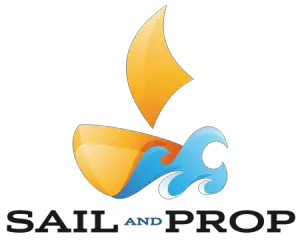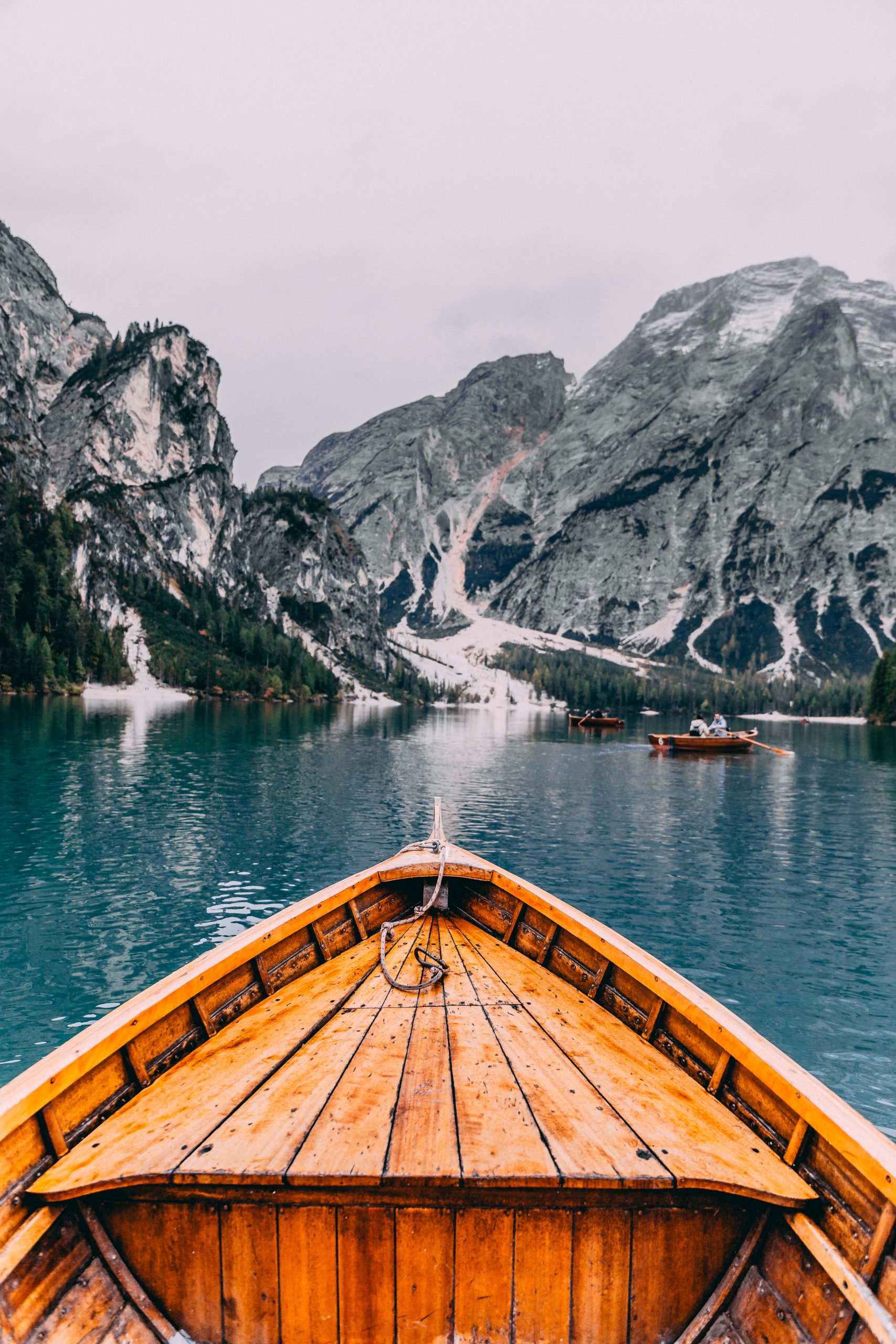Sailing around the world – the ultimate dream for many boaters – is far more achievable than you might think. Modern day navigation techniques, windvanes, worldwide communication systems and high quality yet affordable offshore safety equipment (not to mention the opening of the Panama Canal), have brought the goal of circumnavigating the world within reach for the everyday sailor. This makes offshore sailing routes with a seaworthy vessel, a well trained crew and some determination, a reality for you to set sail all the way around the world.
This guide is designed for the average sailor with some experience with offshore sailing routes to plan their own cruising style circumnavigation. If you have not yet completed many blue water passages, it would be a good idea to first try a six month or one year cruise to see if the offshore voyaging lifestyle is for you. Some excellent sailing routes for this kind of voyage, such as a sailing circuit of the Atlantic or Pacific Oceans, have been covered in our previous article “The Ultimate Guide to Offshore Sailing Routes”.
Once you have accumulated some offshore experience and have a well tested and properly equipped vessel, the next step is to plan a sailing route and schedule. That’s where this guide comes in. Here, we will cover in detail a three year sailing circumnavigation via a favorite route for cruising boaters – by way of the Panama Canal and the Cape of Good Hope.
The advantages to such a route are many. Most of the voyage route lies in the trade wind belts of the tropics, making for relatively easy sailing, ideal conditions, and many beautiful ports of call along the way. This route avoids the stormy and dangerous weather off Cape Horn by instead passing through the Panama Canal, and also avoids the Indian Ocean piracy hotspots like Somalia by rounding the South African coast. There are numerous secure ports along the way to keep your vessel safe during hurricane season, and many sailors are able to sail this route for years and never encounter a severe storm.
Of course, for the adventurous boater there are various possibilities for side excursions off the beaten track and the potential variations to this route are endless. For the sake of this guide, we will begin our world cruise on the East Coast of the United States, but one could join this route from anywhere along the way, adjusting their schedule accordingly.
You could easily join this route from the West Coast of North America with a coastal cruise down the Pacific Coast of the US and Mexico, and a European boater could join this route in the Caribbean after a transatlantic crossing via the Canary Islands.
A Brief History of the First Voyage Around the World
It may come as a disappointment for flat-earthers, but it has been established that you can indeed sail around the world for quite some time. While it is sometimes claimed that the first circumnavigation was made by ancient Polynesian or Chinese voyagers, the first recorded voyage around the world was made by the crewmembers of Captain Ferdinand Magellan’s expedition in 1522.
Magellan
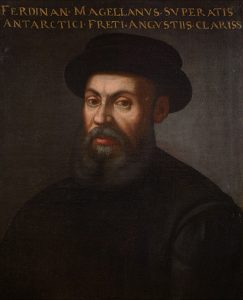
The famous navigator Magellan was a citizen of Portugal, but he organized the expedition for Spain, and was sailing under the Spanish flag.
Prior to his round the world expedition, Magellan had taken part in various voyages between Europe and the Indies, exploring throughout Southeast Asia, and he lived in India for a number of years. While participating in the Portugese conquest of Malacca, Magellan purchased a fourteen year old slave named Enrique. Magellan took him on his return voyage to Portugal, and Enrique was later to become a key part of the round the world voyage.
At the time of Magellan’s circumnavigation, the trade routes to Asia around the bottom of Africa was controlled entirely by the Dutch. Like Columbus before him, Magellan believed that there was a feasible route to Asia from the west, this time by sailing around the bottom of the Americas, instead of simply sailing across the Atlantic Ocean, as Columbus had believed. He attempted to get support for a voyage to try this route, but Portugese royalty ignored his requests for years.
Eventually Magellan became so sick with his home country that he renounced his citizenship and moved to Spain. The Spanish king, eager for a chance to get ahead in the great game of global colonization, offered to support Magellan almost immediately. Magellan was given command of a small fleet of three ships, and set off to sail around the world in 1519.
First Offshore Sailing Routes
The first voyage around the world, which lasted about three years, had a bumpy start which was a preview of the challenges to come. Magellan tried but failed to find a route around the bottom of the Americas during the first year of the voyage, so he found a place to spend the austral winter along the coast of what is now Argentina.
Half of his crew attempted a mutiny here, and they almost got away with it. Later, when the expedition was seeking a route through the Magellan Strait (which separates the island of Tierra del Fuego with the South American mainland), one of his ships deserted the expedition and sailed back to Spain alone.
After much hardship, the remaining ships made the first successful transit from the Atlantic Ocean to the next ocean to the west, which Magellan named the Pacific because it was calm at that time. At the time, he believed that the Indies were just four or five days sail away. This misunderstanding of geography was to prove deadly.
Three months and twenty days later, Magellan made landfall on the island of Guam, after making the remarkable achievement of successfully crossing the entire Pacific Ocean without finding anywhere to make landfall along the way. Due to the lack of fresh foods and vitamin c on the crossing, many of his crew died of scurvy enroute.
From Guam, the expedition sailed on to Southeast Asia, finally arriving at their original destination. They had made the first voyage from Europe to Asia from east to west, which was at that time even more significant (because of the importance of global trade routes) than sailing around the world.
The First Person to Sail Around the World
Unfortunately, Magellan himself was killed and possibly eaten during an unfortunate encounter with cannibalistic headhunters in the Philippines. Because he had previously sailed to Asia on earlier expeditions, Magellan had come very close to completing the first voyage around the world, but he never made a complete circumnavigation himself.
Magellan never quite made it around the world, but it may be his little known slave Enrique who closed the circle first. Following the death of Magellan in the Philippines, Enrique left the expedition on his own, telling other crew members that he was going to try to find his way home to Malacca, where he had been captured as a young teenager.
It is not known if he ever made it back, but Malacca was only a short distance away at that point, and trade routes at that time would have made it very possible for him to make it home. If he survived the short voyage to Malacca, then it may be a little known Southeast Asian slave, not the famous Portuguese explorer, who was the first to sail all the way around the world.
In the end, only 18 of Magellan’s original 270 crew members made it back to Spain alive. One of the surviving commanders published the first recorded account of a circumnavigation of the world, but the credit still goes to their Captain Magellan, who organized the expedition and was the driving force behind the voyage.
The Starting Line – The Caribbean
You too, can sail around the world, but fortunately the voyage is now much less perilous than in years before. In the next several sections, I will outline a plan for a three year cruise around the world. This route will stop off at dozens of countries on five different continents, sail across three major oceans, and travel over 25,000 nautical miles. Our schedule also factors in several months each year to work or fly home, or for those seeking additional adventures, overland travel in Oceania, Africa and the Americas.
In order to take best advantage of the prevailing weather patterns, we begin in the Caribbean in November. It is important not to start too early, because we definitely won’t want to begin our world voyage by encountering a late season hurricane. Departing from the East Coast of the United States, our first passage is a short crossing of the Gulf Stream, followed by a few weeks of island hopping down the Bahamas. This is the perfect place to test your vessel and get warmed up for the longer passages ahead. It’s also one of the most beautiful cruising grounds in the world.
The Bahamas
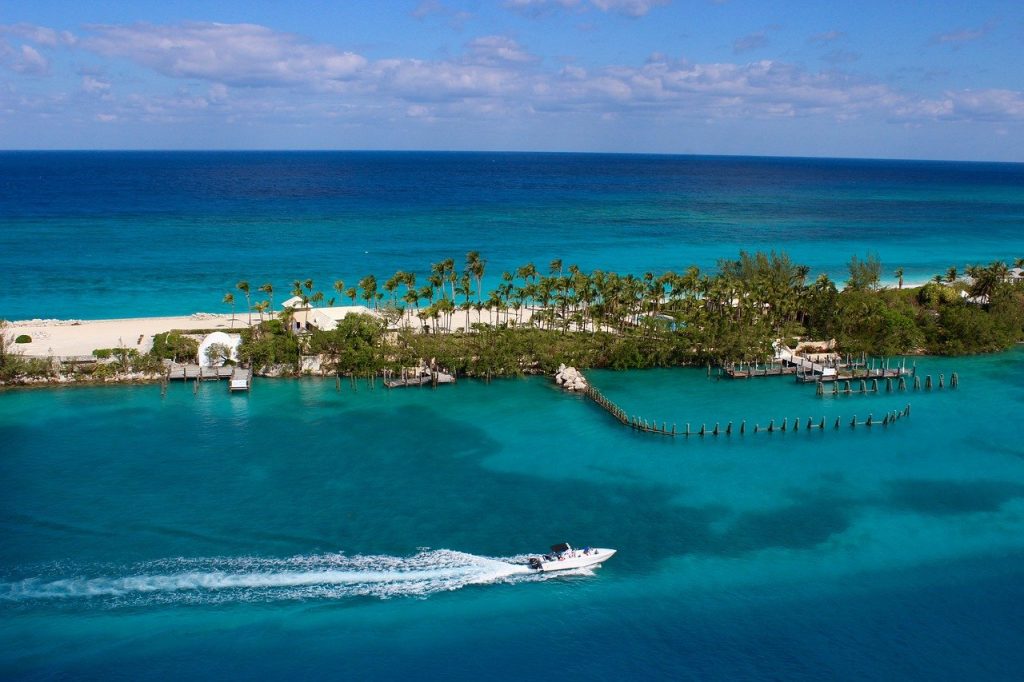
The Bahamas are truly a sailor’s paradise, but they can also be dangerous, so it’s important to be cautious of the shallow seas and numerous reefs along this island chain. This first leg down the Bahamas is also primarily upwind sailing, although you can get more favorable conditions by taking advantage of the occasional northerly wind that passes through and making your longer passages with the wind on the beam.
By the time you reach the southern Bahamas – with a possible detour to the Turks and Caicos – the prevailing winds will be astern and you should be able to either sail on a beam reach, a broad reach or a run (with the wind on the side, the aft quarter, or the stern) all the way to Panama.
Jamaica
The next planned stop on our route is Jamaica, but adventurous sailors could fit in detours to the Dominican Republic, Haiti or Cuba, just make sure to do careful research on the current situation for cruisers and make sure you have taken all the necessary precautions for a safe visit. I made a stop in Cuba on one of my first solo yacht deliveries at the age of eighteen, and had a wonderful five day visit.
Jamaica is a great place to leave the boat for some inland exploration by bus or rental car before the five or six day sail to Panama. If you are keeping to the three year schedule, try to arrive in Panama by January so that you can have plenty of time to prepare for your transit of the Panama Canal.
After completing three passages from the Atlantic to the Pacific Ocean through the canal, I always give myself at least two weeks to make the transit. Most of that time will be spent waiting in Shelter Bay Marina for your turn to go through the canal. In order to simplify the process, I always recommend using a local agent to organize the transit.
The government of Panama has commercialized the canal extensively since control was handed over from the United States. In 2020, fees were doubled for small vessels and most mid size cruising boats can expect to pay between $3,000-$6,000 for the entire process, including cruising permits, transit fees and marina expenses.
I would recommend setting a date for your transit and once everything is in order taking a side trip to the San Blas Islands, or traveling overland around the country. Panama has many beautiful places to visit, but the canal zone is not the most attractive part of the country in which to spend two weeks.
Return to the Shelter Bay Marina two or three days early to make the final preparations for your passage through the canal. You will also need four crew to act as line handlers, along with the Captain and a special Panama Canal pilot who will accompany you through the canal.
Once you have passed through to the Pacific you can heave a sigh of relief. The Central American bureaucracy is behind you and ahead is the freedom of the greatest ocean in the world – the Pacific.
Into the Pacific – Panama to French Polynesia
Balboa, on the Pacific side of the Panama Canal, is a great place to provision for the passage to the South Pacific. From here onwards, supplies become more difficult to obtain and more expensive, so buy extra of all non-perishable foods. You will pay twice as much to buy the same items in Tahiti. You can also top up your water and fuel at the Balboa Yacht Club and Panama City, the largest city in Central America, is just a short taxi ride away.
A short day sail from Baloba is the Las Perlas Islands. Clear customs in Balboa and stop in the Las Perlas for a night to recover from the excitement of the city and to focus on your next goal of crossing the largest ocean on the planet.
Galapagos Islands
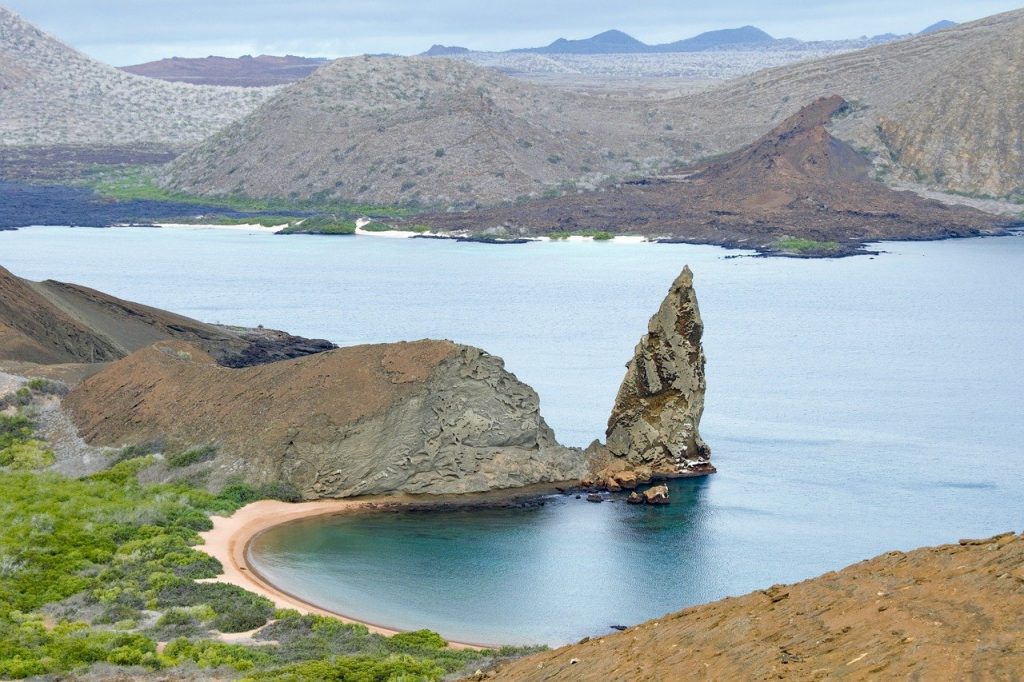
Most cruisers make their next port of call in the Galapagos Islands, a 1,000 nautical mile sail from Panama. In order to avoid the worst of the doldrums in this area (a stretch of ocean with little to no wind), it is usually best to first motor sail south along the coast of Colombia until south of the Equator and then turn west towards the Galapagos.
This means fighting the strong Humboldt current for the first several days of the passage, but then gives you a nice beam reach (across the wind) the rest of the way to the Galapagos. If you want to experience a taste of South America, you can break up the passage with a short stop on the mainland coast of Ecuador.
The Galapagos Islands themselves make for a very interesting cruising ground, but keep in mind that most of the islands are managed as an Ecuadorian national park and all boating is highly regulated. If you wish to sail anywhere outside the three primary ports you will need to hire a local park ranger to accompany you around the islands and pay for an expensive cruising permit. Another option is to make sure your vessel is safely moored and join one of the many excellent local cruises around the islands, or do some inland exploring.
Some cruisers, wishing to avoid red tape as much as possible, opt to even leave their vessel in a secure marina in mainland Ecuador (moorage options are limited in the islands) and fly out to the Galapagos to avoid the cruising permit fees and other complications. Regardless of how you visit, the islands are unlike anywhere else on earth when it comes to viewing wildlife, and they are not to be missed on a world cruise.
The passage from the Galapagos to French Polynesia is the longest nonstop offshore leg of your round the world voyage. It’s approximately 3,300 nautical miles to the Marquesas, which should take 3 weeks or so for the average cruising vessel. It’s a good idea to buy most of your nonperishable foods in Panama, but it should be no problem to find ample fresh fruits and vegetables in the Galapagos markets, as well as fuel and freshwater in the ports.
It’s important to buy plenty of everything for this next leg of the journey, as there are no potential stops along the way. The best month for this passage is March, which will allow you to arrive in French Polynesia at the start of the South Pacific cruising season.
The Paradise Islands – The South Pacific
It’s a long sail to French Polynesia, but if you are properly prepared this leg of the journey should be one of your most special memories from your cruise around the world. The next leg of your journey is known by boaters as the “Coconut Milk Run” because of the easy sailing, low key ports of call along the way, and the slow living in the islands of the South Pacific. The wind should be aft of your beam (behind you) all the way, and south of the equator you are in the southeast trade winds, almost always making for an excellent sail.
In the fast paced modern world, few people get the opportunity to experience three weeks in a world of their own on the ocean. Here, far from traffic stops and pollution, you can catch up on reading and writing, learn to play a new musical instrument, fine tune your fishing and cooking skills – or do anything you like. After all, you are in the last truly free environment left on earth. After a few weeks of sailing you will make landfall in one of the most beautiful archipelagos in the world – the paradise islands of French Polynesia.
French Polynesia
I will never forget my first landfall in French Polynesia after 62 days alone on a small sailboat. The green sides of the mountains rise straight out of the sea and the smell of earth and flowers was very distinct after only smelling the ocean for so long. Everything seemed new and exciting, a feast for the senses.
The two best ports of entry in the Marquesas are Taiohae Bay on Nuku Hiva or Atuona on Hiva Oa. Here, most cruisers ask for a three month cruising permit, which gives ample time for enjoying what may be the most loved cruising area in the world.
Marquesas Islands
The Marquesas Islands deserve at least two or three weeks of exploration, but don’t linger too long because there is much to see in the South Pacific. The goal for the first year of the circumnavigation is to make it to New Zealand to secure moorage outside the storm affected area before the South Pacific cyclone season begins in November. By the time you arrive in the Marquesas, you are already over two thirds of the way there, but the most appealing cruising grounds of the entire voyage are still ahead of you.
Tuamotu Archipelago
The next port of call is in the Tuamotu Archipelago, a series of low lying islands that cover a huge portion of French Polynesia but very little of the land area. The appeal here lies under the water. Millions of years ago, the Tuamotus were mountainous just like the Marquesas. But the islands eroded into the sea, leaving just a ring of coral around the edge that just barely rises above the surface of the ocean.
Many of the islands provide secure anchorage from the ocean swells by entering the lagoon inside through a narrow pass, or gap in the reef. They can be safely navigated by a confident mariner, but make sure to study the tides and currents carefully before entry, because the current can be too strong for safe transit at the wrong time.
Once inside the reef, you are in an entirely different type of environment. While the appeals of the Marquesas Islands are primarily on shore and the water is not well suited to snorkeling or diving, the Tuamotus are famous around the world as one of the best locations for underwater activities in the world. With your vessel securely anchored inside the reef, you can spend days or weeks swimming, fishing and diving inside the protected lagoon, or surfing outside of it. Some of the islands are also home to pearl farms, where the much loved and very expensive French Polynesian black pearls are cultivated.
Tahiti
After you have gotten your fill of the Tuamotu Islands, the next port of call on the itinerary is perhaps the most famous island in the world – Tahiti. Ever since the days of Captain Cook and Bligh, Tahiti has been a favorite destination for sailors from around the world. Tahiti and the other nearby society islands – like Bora Bora, Moorea and Huahine – are the very image of paradise.
The Society Islands blend the lush mountains of the Marquesas with the crystal clear waters of the Tuamotus and the French influence from colonization. You should plan to spend at least a month to properly experience this unique part of the world, and one could easily spend a lifetime.
It was after visiting Tahiti on the English ship the Bounty that the well documented beauty of the islanders and “garden of eden” type lifestyle of the Polynesians inspired first mate Fletcher Christian to commit mutiny and set Captain Bligh and his loyalists adrift in a small lifeboat. Christian and his fellow mutineers returned to Tahiti to be reunited with their island girlfriends before fleeing to tiny Pitcairn Island to avoid being caught by the authorities. Their descendents still live there to this day.
There are many options for ports of call between French Polynesia and New Zealand, but we will focus on the favorite route for world circumnavigators, stopping at the Cook Islands, Samoa, Tonga and Fiji, before the final passage south – away from the path of cyclones.
The Cook Islands
The Cook Islands are the first stop – a country that consists of a handful of small islands scattered across a large area of ocean. Here, you have the option of either sailing to an uninhabited atoll like Suwarrow, only visited by occasional cruisers, or a traditional Polynesian island, like Palmerston Atoll. If you decide to stop at the latter you will need to make sure at least one of your crew can keep an anchor watch at all times because there is no secure place to drop the hook. The inconveniences due to the poor anchorage are well worth it for the chance to meet the friendly inhabitants of this remote island.
America Samoa
American Samoa, the next port of call along the route, is much more developed than most of the islands in the South Pacific. This is the first port since Panama where you can buy provisions for prices similar to those found in the mainland USA, or even better in some cases. Many cruisers choose to provision quickly in American Samoa and then move on to Western Samoa for cruising, which is less developed and more traditional than it’s American twin.
Tonga
From here, it’s a short sail to Vavau, Tonga, which is considered the best place on this route for coastal cruising and island hopping. Captain James Cook named Vavau the Friendly Islands due to the hospitality that he received here, and it survives to this day. Sailors are welcomed with open arms, and more than one has fallen in love with the place and decided to stay.
If you have friends and family who want to fly in and take part in your world voyage, Tonga is a great place to show them the beauty of a coastal cruise in the South Pacific. If they take to life onboard, you might even invite them along for the three day passage to Fiji, your penultimate stop on the first year of the circumnavigation.
Fiji
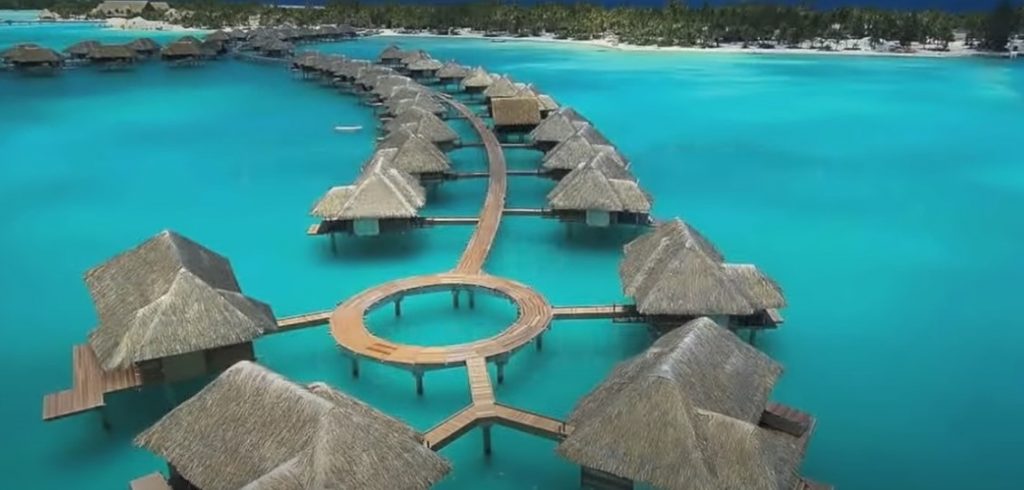
Fiji is a fascinating place of contrasts, vibrant culture and natural beauty. By the time you have gotten this far it will likely be late in the season, but it’s a good idea to try to arrive by September to give yourself a solid month to explore here before the passage to New Zealand.
The next leg of the journey is the longest since the sail to the Marquesas, and rough weather is common. The water between Fiji and New Zealand is affected by Southern Ocean gales, and many cruisers take a real beating on this crossing. This is where you will finally leave the South Pacific trade winds astern and cross over into (mildly) higher latitudes. Make sure to carefully watch the weather prior to departure, and hire a professional weather router if necessary.
New Zealand
New Zealand may be a challenge to get to, but it’s well worth the struggle. Here you can find everything that you could need to work on the boat, and there is no better place to keep it safe for the South Pacific Cyclone Season. You will have from November to March to either sail around the islands, explore overland, or fly home to work or visit family. You have now been at sea for a full year, explored countless new countries, and crossed the greatest expanse of water on the planet. It’s time for a good solid rest!
For the last leg of the voyage, check out the second article in this two part series. In the next piece, we will sail onwards to Australia and Africa, before closing the circle in the Caribbean.
If you are thinking about embarking on a boating adventure like sailing around the world, there is no better place to get up to date on the latest tips and information than here at SailAndProp.com. We will be publishing new articles regularly, so click here to get our newsletter sent directly to your inbox.
